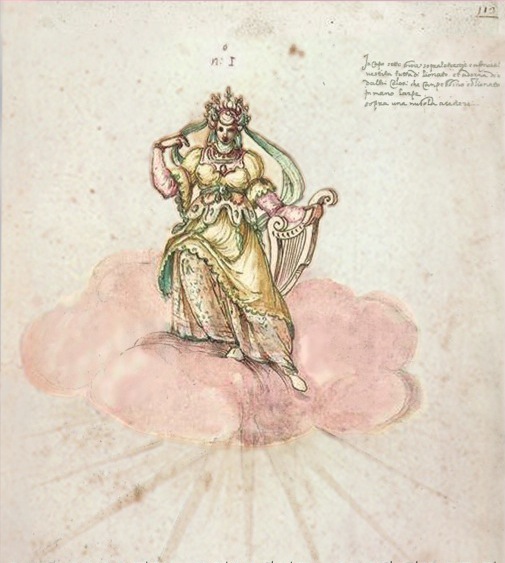
Gender and creation in the history of performing arts
before July 20, 2013 - Paris EHESS
Télécharger ce(s) document(s) :
Elizabeth CLAIRE (CRH-EHESS-CNRS), Catherine DEUTSCH (Univ. Paris-Sorbonne), Raphaëlle DOYON (LABEX CAP, CRAL-HICSA)
December 12-14, 2013
Paris, EHESS
For several decades in France, feminist and gender theory have become integral to the study of literature, cinema and the visual arts ; however, the dialogue between gender studies and the history of the performing arts remains relatively unexplored. In order to redress this lack, and with the intention of creating a space for generative research and exchange, we have purposefully defined as broadly as possible the periodization, and geographical and cultural parameters of this conference. We wish to encourage innovative thinking and fortuitous connections between scholars of diverse disciplines. Thus, our definition of “performing arts” is explicitly inclusive, seeking presentations principally about the history of theatre, music and dance, but also circus, popular culture, ritual performance, set and lighting design, and creative contributions by artists working with textiles, costume, make-up, etc.
Studying the history of creativity in the performing arts through the prism of gender invites us to confront performance intricacies through a series of questions : How can historians write about the memories of a performed event and the process of its creation in ways that represent and comprehend the full complexity of the creative process ? In what way might the fragmentary nature of the traces left behind a performance contribute to the gendering of its history ? How might the difficulties of identifying or naming female creative contributions to art-making reveal a sexual division of labour in the creative process ? What is the role of the gendered body in the act of interpretation, and how have such bodies and their expressivity been perceived ? How has the construction of gendered identities fashion, and how might they in turn have been fashioned by the content of the works performed and/or the techniques of interpretation employed and embodied ? How does a gendered approach to writing the history of performance bring to the fore evolving tensions between the socio-cultural identities of those who create, and those whose contributions have been recognized differently, or not at all ? Three moments of reflection will frame our historical study of gender and the performing arts :
(1) Gesture and Interpretation will focus on the creative practice, the moment of embodying performance ;
(2) Creating Art and Constructing the Self looks at the normalization of the creative act, the reception of a performance and its inscription in discourse, the relationship between performer and performed ;
(3) Transmission and Heritage looks at how the creative act is embodied and inscribed over time, passed on from one generation to the next, given a place in the historiography of performance.
1. Gesture and interpretation
We aim to look at theatrical, musical and danced gesturesin relation to the gendered body. The notion of
interpretation here refers to the performance of a tradition, a text, score, or choreography, as well as the way in which the
performing act is perceived and received by an audience. We wish to examine the mechanisms that have lead to a
hierarchical distinction between performer and creator, particularly in cases where this distinction has underpinned the
marginalization of certain performance practices considered “feminine,” private or amateur and thus traditionally not
identified as art.
2. Creating art and constructing the self
Here the focus will be on discursive, iconographic and other representations of performance practices that might reveal a gendered logic in the perception of creativity and the reception of the creative act. We will explore the way in which the creators of performances are positioned by, or position themselves in relation to, the act of creation. Through terminological studies and discursive analyses we hope to discern, for each of the arts in question, how these creative practices were perceived through time. We also seek studies that expose gendered strategies of resistance to these normative constraints, as they were employed in creative practice and interpretation.
3. Transmission and heritage
We propose to investigate how the creative act gets remembered, including the voluntary amnesias and mechanisms of forgetting that have led to a gendering of the historical discourse about creativity in the performing arts. To investigate the history of these silences, these absences, we seek proposals that discuss and identify the gendered nature of this process of invisibilization in the historiography of these arts. We also hope to articulate how accepted artistic practices might contribute to a gendering of the very cultural heritage they perpetuate and invent. How does the transmission of creativity, a gendered cultural phenomenon, participate in the construction of knowledge itself ? And how has the academicization of these cultural praxes been influenced by this gendered inheritance ?
Proposals must be submitted before July 20, 2013 to : genre.artsvivants@gmail.com
For paper proposals, please include your name, institutional affiliation (where applicable), a working title and a paragraph proposal of approx. 200 words.
For panel proposals provide additionally a panel title and description of approx. 250 words.
The languages of the conference will be French and English.
Complete informations :
Fichiers de syndication :
Statistiques :
Le site contient 4383 articles

